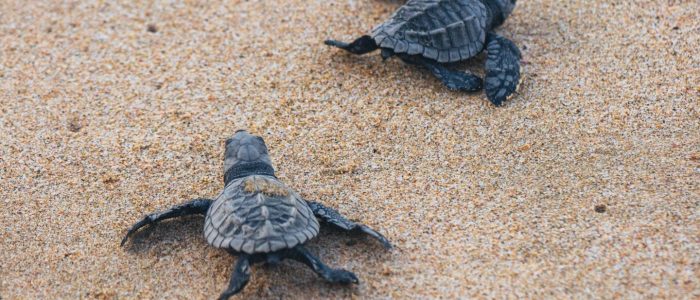
In the end, it all works out, and even though assuming that we depend on external factors to thrive, nature keeps proving to us that everything that’s intertwined and performs hand on hand, will work out into a perfect outcome. Turtles are no exception: from hatching on a group, facing the openness of the ocean without any guidance, to thriving and persisting amongst the adversities through a life of up to 100 years.
Like many other marine creatures, sea turtles and Sampers have something in common: we understand and relish the thrill of moving from one place to another, from migrating. Traveling an average of 3,700 miles from shore to shore between feeding and breeding areas. After mating at sea, female turtles come ashore on beaches to lay their eggs: they dig a hole in the same sands where you sunbathe, deposit up to 100 eggs, cover it back up, then return to the sea.
During around 60 days, those eggs lay in their nests on the same beaches where we enjoy life, and as for our oath, we always consider doing all we can to give nature something back. And since we don’t have a hundred years to keep procrastinating into “making the world a better place” let’s begin with the non-negotiables of taking care of turtle nests while Samping.
Don’t drive too close to the beach line
Witnessing the perfection of nature comes with great responsibility, such as preserving these often delicate habitats. Turtles tend to lay their eggs closer to the shoreline, so driving too close to the water might elevate the chances of driving on top of one and hurting the eggs.
If you spot a nest, leave it be
How to identify them? No two nests look the same, but the easiest way to identify them is from the tracks left in the sand by the turtles returning to the ocean. However, these might not stay there for long, so if you see a circular spot in the sand where the patterns look different, it might be it: so when in doubt, keep your distance.
Don’t try to lead, they know their way
Turtles tend to be more active at night, and they’re already enlightened beings, so they don’t need our flashes or flashlights, in fact, any artificial light source might disorient them and interfere with their natural instincts.
Make this world a better place
May you always manage to leave something good in that happy place. Keep the grounds clean, turtles are particularly sensitive to plastic waste and can often mistake it for food, which can be fatal. By removing any trash or debris from the area, we can help to create a safe and welcoming environment during their nesting and hatching process, which occurs throughout the whole year, but the season might peak during the months of June through December.
Caring for the environment is a way of syncing in with nature to make ourselves part of the perfection of its processes.